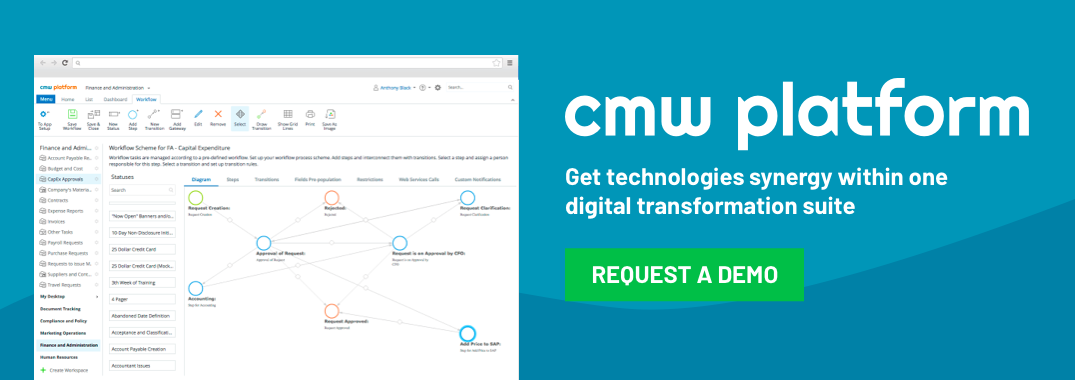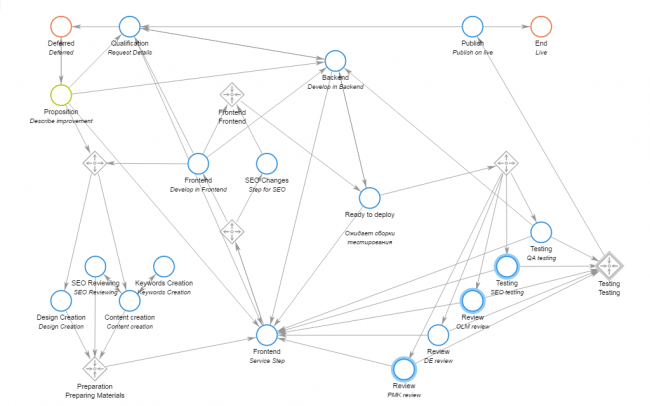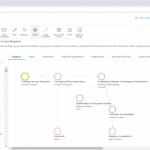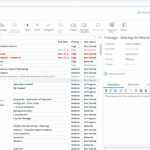4 Key Tips for Workflow Coordination
Monday, October 8, 2018
Managing workflow can be difficult. Sometimes workflow coordination comes down to emails, notes pinned to a bulletin board, or the unreliability of memory. Some methods that small and midsize business owners and big company department heads use impede workflow efficiency, which has a negative impact on productivity. Teams can become confused and hesitate rather than charging ahead.

Below is an example of a workflow for pretty generic task completion – publication of a new page on a website. It is obvious that manual coordination of this workflow might be a nightmare. However, workflow automation can make dramatic difference, ensure that people are focused on their duties and communication in a context of work is straightforward, and improve workflow team productivity.
 The right workflow management software keeps everyone in the loop and makes coordinating complex workflows much easier.
The right workflow management software keeps everyone in the loop and makes coordinating complex workflows much easier.

Problems in Operational Workflow
Some of the common workflow issues that businesses of all sizes face have to do with setting specific rules for a task, following through with the steps, communication, and having a visual representation of operational workflow. Looking at each of these issues, it is evident why they exist:- First, setting specific rules means setting out the steps. They must be followed so a task can be seen through to its conclusion in the right way. Without specific rules, a company is moving ahead blindly or there is no specific procedure for the completion of a task. This results in the confusion that reduces productivity. Having rules means teaching all employees the same methods.
- Second, it is imperative to follow established steps. Skipping a specific step interrupts workflow efficiency and negatively affects the outcome. Making sure every step of the process is completed and accounted for can benefit workflow a great deal.
- Third, communication is everything. Where communication fails, employees have difficulty being as productive and effective as they can be. If one employee deals with a customer and tells him or her something specific, it is important that the next employee the customer talks to knows the situation. Without that knowledge, steps could be repeated unnecessarily, which frustrates customers. Frustration can also result from repeating the specifics of the problem to another employee, who then gives a completely different answer. This affects the trust the customer has in the company.
- Fourth, not having a visual representation of workflow means a person has to go through the process practically blind. Trying to navigate the steps of a task with sticky notes or memory can be detrimental to the task.
Benefits of Successful Workflow Coordination
By solving the above issues, you can enhance workflow efficiency for increasing productivity. When you can coordinate workflow properly, you can set the rules and place them in a universal location that employees can access and follow. Successful coordination also means improved communication. With improved coordination and the ability to see the progress of a task in real-time, there is less time spent trying to figure out status. Instead, the team is always knowledgeable of what is happening and knows where to start. With all of this present in a platform that authorized employees can access, the platform itself is the visual representation of what is happening.Below is an example of a workflow for pretty generic task completion – publication of a new page on a website. It is obvious that manual coordination of this workflow might be a nightmare. However, workflow automation can make dramatic difference, ensure that people are focused on their duties and communication in a context of work is straightforward, and improve workflow team productivity.
 The right workflow management software keeps everyone in the loop and makes coordinating complex workflows much easier.
The right workflow management software keeps everyone in the loop and makes coordinating complex workflows much easier.How CMW Tracker Improves Workflow Efficiency
All of the aforementioned workflow solutions can be implemented through CMW Tracker with minimal IT involvement, which, in itself, can eliminate a significant number of steps when establishing a sound operational workflow. Nontechnical users can design their workflow rules and modify workflow through a drag-and-drop interface.- You can design your own workflows through the intuitive Outlook-style interface.
- You can use the drag-and-drop workflow editor to set up business rules and business forms.
- Web forms allow for the capture and management of operational and business data.
- Data and documents are unified. Tasks can be assigned.
- Mobile platforms are supported so you can execute and manage workflows from anywhere.
- You get real-time control and full visibility through Workflow Engine and the easy-to-use workflow automation tools. Information is captured all along the way.
- You have full analytics through dashboards that can be configured to notify and report the way you need them to.
- Searchable group discussions allow you to find information quickly.
- You can share documents so that knowledge can be available to all involved employees.
- Platform easily integrates with SharePoint, Outlook, and Active Directory.




Posted on: in Workflow